Submitted:
08 August 2023
Posted:
09 August 2023
You are already at the latest version
Abstract
Keywords:
1. Introduction
2. Leishmaniotic dog: the infected animal, but healthy and the sick dog
3. Inserts of Leishmania infection during the activity of canine immune system (from newborns to seniors)
4. Leishmania diagnosis: some findings of natural canine infections
3.1. Molecular results of clinical samples by Polymerase Chain Reaction PCR
3.1.1. Results of PCR for the biological samples collected from “Jimmy”
- Auditive duct swabs: (PCR) Leishmania sp. NEGATIVE
- Mucous membrane of the anus swabs: (PCR) Leishmania sp. POSITIVE
- Oral Mucosa swabs: (PCR) Leishmania sp. POSITIVE
- Whole Blood*: (PCR) Anaplasma platys NEGATIVE
- Whole Blood*:(PCR) Babesia vogeli NEGATIVE
- Whole Blood*: (PCR) Ehrlichia canis NEGATIVE
- Whole Blood*: (PCR) Leishmania sp. POSITIVE
- Whole Blood*: (PCR) Mycoplasma sp. NEGATIVE
- Whole Blood*: (PCR) Rangelia vitalli NEGATIVE
- Preputial secretion swabs: (PCR) Leishmania sp. POSITIVE
- Ocular Swab: (PCR) Leishmania sp. POSITIVE
3.2. Hemogram and ELISA analyses
5. An emerging focus on lipids in Leishmania extracellular vesicles
3.1. Quantification of lipid bodies CLs in promastigote of Leishmania (Leishmania) amazonensis and endocytosis and exocytosis process of Leishmania
3.1.1. Methodology
3.2. Macrophages infected with Leishmania (Leishmania) amazonensis examined by Transmission Electronic Microscopy TEM
6. The immune expected effects of approved vaccines for canine leishmaniosis and some steps for the next-generation therapies following LEVs research advances
7. Discussion
8. Conclusions
Supplementary Materials
Author Contributions
Funding
Institutional Review Board Statement
Informed Consent Statement
Data Availability Statement
Acknowledgments
Conflicts of Interest
References
- Gabriel, M.; Galué-Parra, A.; Pereira, W.L.A.; Pedersen, K.W.; da Silva, E.O. Leishmania 360°: Guidelines for Exosomal Research. Microorganisms 2021, 9, 2081. [Google Scholar] [CrossRef] [PubMed]
- WHO. Control of Neglected Tropical Diseases. Available online: https://www.who.int/teams/control-of-neglected-tropical-diseases/interventions/strategies (accessed on 10 June 2023).
- Solano-Gallego, L.; Miró, G.; Koutinas, A.; Cardoso, L.; Pennisi, M.G.; Ferrer, L.; Bourdeau, P.; Oliva, G.; Baneth, G.; The LeishVet Group. LeishVet guidelines for the practical management of canine leishmaniosis. Parasit Vectors 2011, 4, 86–86. [Google Scholar] [CrossRef] [PubMed]
- Yakubovich, E.I.; Polischouk, A.G.; Evtushenko, V.I. Principles and Problems of Exosome Isolation from Biological Fluids. Biochem (Mosc) Suppl Ser A Membr Cell Biol. 2022, 16, 115–126. [Google Scholar] [CrossRef] [PubMed]
- Gizzarelli, M.; Bosco, A.; Foglia Manzillo, V.; Bongiorno, G.; Bianchi, R.; Giaquinto, D.; Ben Fayala, N.E.H.; Varloud, M.; Crippa, A.; Gradoni, L.; Cringoli, G.; Maurelli, M.P.; Rinaldi, L.; Oliva, G. Examining the Relationship of Clinical and Laboratory Parameters with Infectiousness to Phlebotomus perniciosus and Its Potential Infectivity in Dogs with Overt Clinical Leishmaniasis. Front. Vet. Sci. 2021, 8, 667290. [Google Scholar] [CrossRef] [PubMed]
- Wijerathna, T.; Gunathilaka, N. Diurnal adult resting sites and breeding habitats of phlebotomine sand flies in cutaneous leishmaniasis endemic areas of Kurunegala District, Sri Lanka. Parasites Vectors 2020, 13, 284. [Google Scholar] [CrossRef]
- Cecílio, P.; Cordeiro-Da-Silva, A.; Oliveira, F. Sand flies: Basic information on the vectors of leishmaniasis and their interactions with Leishmania parasites. Commun. Biol. 2022, 5, 305. [Google Scholar] [CrossRef]
- Dodd, R. Transmission of Parasites by Blood Transfusion. Vox Sang. 1998, 74 (Suppl. 2), 161–163. [Google Scholar] [CrossRef] [PubMed]
- Pangrazio, K.K.; Costa, E.A.; Amarilla, S.P.; Cino, A.G.; Silva, T.M.; Paixão, T.A.; Costa, L.F.; Dengues, E.G.; Diaz, A.A.; Santos, R.L. Tissue distribution of Leishmania chagasi and lesions in transplacentally infected fetuses from symptomatic and asymptomatic naturally infected bitches. Veterinary Parasitology 2009, 165, 327–331. [Google Scholar] [CrossRef]
- Avila-García, M.; Mancilla-Ramírez, J.; Segura-Cervantes, E.; Farfan-Labonne, B.; Ramírez-Ramírez, A.; Galindo-Sevilla, N. Transplacental transmission of cutaneous Leishmania mexicana strain in BALB/c mice. Am J Trop Med Hyg. 2013, 89, 354–358. [Google Scholar] [CrossRef] [PubMed]
- Karkamo, V.; Kaistinen, A.; Näreaho, A.; et al. The first report of autochthonous non-vector-borne transmission of canine leishmaniosis in the Nordic countries. Acta Veterinaria Scandinavica. 2014, 56, 84. [Google Scholar] [CrossRef]
- Naucke, T.J.; Amelung, S.; Lorentz, S. First report of transmission of canine leishmaniosis through bite wounds from a naturally infected dog in Germany. Parasites & Vectors 2016, 9, 256. [Google Scholar] [CrossRef]
- Miró, G.; López-Vélez, R. Clinical management of canine leishmaniosis versus human leishmaniasis due to Leishmania infantum: Putting “One Health” principles into practice. Veterinary Parasitology 2018, 254, 151–159. [Google Scholar] [CrossRef] [PubMed]
- do Rosário, C.J.; Dominici, M.F.; Braga, M.D.; Lima, C.A.; Pereira, J.G.; Melo, F.A. Quantification of IL-10 and IFN-γ in dogs with or without clinical signs of Leishmania (Leishmania) chagasi infection symptoms. Pesq. Vet. Bras. 2018, 38, 129–132. [Google Scholar] [CrossRef]
- Tizard, Ian R. Imunologia veterinária/Ian R. Tizard; By Luciana Medina, Mateus D. Luchese. - 9. ed. – Rio de Janeiro: Elsevier, 2014.
- Toepp, A.J.; Petersen, C.A. The balancing act: Immunology of leishmaniosis. Res Vet Sci. 2020, 130, 19–25. [Google Scholar] [CrossRef] [PubMed]
- Day, M.J. Immune system development in the dog and cat. J Comp Pathol. 2007, 137 (Suppl. 1), S10–S15. [Google Scholar] [CrossRef] [PubMed]
- Chaplin, D.D. Overview of the immune response. J Allergy Clin Immunol. 2010, 125 (Suppl. 2), S3–S23. [Google Scholar] [CrossRef] [PubMed]
- Hosein, S.; Blake, D.; Solano-Gallego, L. Insights on adaptive and innate immunity in canine leishmaniosis. Parasitology 2017, 144, 95–115. [Google Scholar] [CrossRef]
- Varadé, J.; Magadán, S.; González-Fernández, Á. Human immunology and immunotherapy: Main achievements and challenges. Cell Mol Immunol 2021, 18, 805–828. [Google Scholar] [CrossRef]
- Pereira, M.; Valério-Bolas, A.; Saraiva-Marques, C.; Alexandre-Pires, G.; Pereira da Fonseca, I.; Santos-Gomes, G. Desenvolvimento do Sistema Imunológico Canino: Do Útero ao Idoso. Vet Sci. 2019, 6, 83. [Google Scholar] [CrossRef]
- Taghipour, A.; Abdoli, A.; Ramezani, A.; et al. Leishmaniasis and Trace Element Alterations: A Systematic Review. Biol Trace Elem Res 2021, 199, 3918–3938. [Google Scholar] [CrossRef]
- Hotez, P.J.; Pecoul, B.; Rijal, S.; Boehme, C.; Aksoy, S.; Malecela, M.; et al. Eliminating the Neglected Tropical Diseases: Translational Science and New Technologies. PLoS Negl Trop Dis 2016, 10, e0003895. [Google Scholar] [CrossRef] [PubMed]
- Neurauter, A., Kierulf, B., Kullmann, Li, A., M., Manger, I. and Pedersen, K.W. From basic research to potential clinical applications: Adapting methods for EV enrichment and analysis. Available online: (PDF) From basic research to potential clinical applications: Adapting methods for EV enrichment and analysis (researchgate.net) (accessed on 10 June 2023).
- Baneth, G.; Thamsborg, S.M.; Otranto, D.; Guillot, J.; Blaga, R.; Deplazes, P.; Solano-Gallego, L. Major Parasitic Zoonoses Associated with Dogs and Cats in Europe. J. Comp. Pathol. 2016, 8, 1–21. [Google Scholar] [CrossRef]
- Vilhena, H.; Martinez-Díaz, V.L.; Cardoso, L.; Vieira, L.; Altet, L.; Francino, O.; Pastor, J.; Silvestre-Ferreira, A.C. Feline vector-borne pathogens in the north and centre of Portugal. Parasites & Vectors 2013, 6, 99–104. [Google Scholar] [CrossRef]
- Dantas-Torres, F.; Otranto, D. Dogs, cats, parasites, and humans in Brazil: Opening the black box. Parasites & Vectors 2014, 7, 22–47. [Google Scholar] [CrossRef]
- Woodhall, D.M.; Eberhard, M.L.; Parise, M.E. Neglected Parasitic Infections in the United States: Toxocariasis. Am J Trop Med Hyg. 2014, 90, 810–813. [Google Scholar] [CrossRef]
- World Health Organization. Accelerating work to overcome the global impact of neglected tropical diseases: A roadmap for implementation. WHO: Geneva, 2012. [Google Scholar]
- Akritidis, N. Parasitic, fungal and prion zoonoses: An expanding universe of candidates for human disease. Clinical Microbiology and Infection 2011, 17, 331–335. [Google Scholar] [CrossRef]
- Robertson, L.J.; van der Giessen, J.W.B.; Batz, M.B.; Kojima, M.; Cahill, S. Have foodborne parasites finally become a global concern? Trends in Parasitology 2013, 29, 101–103. [Google Scholar] [CrossRef]
- European Scientific Counsel Companion Animal Parasites. Control of Intestinal Protozoa in dogs and cats - Guideline 6 1rd Edition. Malvern: ESCCAP. 2011. Available online: 3sbvfy71_ESCCAP_Guide_6_spanish_version_def.pdf. (accessed on 10 June 2023).
- Laurenti, M.D.; Rossi, C.N.; da Matta, V.L.; Tomokane, T.Y.; Corbett, C.E.; Secundino, N.F.; Pimenta, P.F.; Marcondes, M. Asymptomatic dogs are highly competent to transmit Leishmania (Leishmania) infantum chagasi to the natural vector. Vet Parasitol. 2013, 196, 296–300. [Google Scholar] [CrossRef]
- Tangtrongsup, S.; Scorza, V. Update on the Diagnosis and Management of Giardia spp. Infections in Dogs and Cats Topics in Companion. Animal Medicine 2010, 25, 155–162. [Google Scholar] [CrossRef]
- Bouzid, M.; Halai, K.; Jeffreys, D.; Hunter, P.R. The prevalence of Giardia infection in dogs and cats, a systematic review and meta-analysis of prevalence studies from stool samples. Veterinary Parasitology 2015, 207, 181–202. [Google Scholar] [CrossRef]
- Braga, Í.A.; dos Santos, L.G.F.; Ramos, D.G.S.; Melo, A.L.T.; Mestre, G.L.C.; de Aguiar, D.M. Occurrence of Ancylostoma in dogs, cats and public places from Andradina city, São Paulo state, Brazil. Rev. Inst. Med. Trop. 2011, 53, 181–184. [Google Scholar] [CrossRef]
- Spratt, D.M. Species of Angiostrongylus (Nematoda: Metastrongyloidea) in wildlife: A review. International Journal for Parasitology: Parasites and Wildlife 2015, 4, 178–189. [Google Scholar] [CrossRef] [PubMed]
- Farrar, J.; White, N.J.; Hotez, P.J.; Junghanss, T.; Lalloo, D.; Kang, G. Manson’s Tropical Diseases. A Manual of the Diseases of Warm Climates, 23rd ed.; Elsevier Saunders: China, 2014. [Google Scholar]
- European Scientific Counsel Companion Animal Parasites. Control of Vector Borne Diseases in dogs and cats - Guideline 52rd Edition. ESCCAP: Malvern, 2012; Available online: https://www.esccap.org/guidelines/ (accessed on 10 June 2023).
- Mencke, N. The importance of canine leishmaniosis in non-endemic areas, with special emphasis on the situation in Germany. Berl Munch Tierarztl Wochenschr. 2011, 124, 434–442. [Google Scholar] [CrossRef] [PubMed]
- Palatnik-de-Sousa, C.B.; Day, M.J. One Health: The global challenge of epidemic and endemic leishmaniasis. Parasites & Vectors 2011, 4, 197–207. [Google Scholar] [CrossRef]
- Chargui, N.; Haouas, N.; Slama, D.; Gorcii, M.; Jaouadi, K.; Essabbah-Aguir, N.; Mezhoud, H.; Babba, H. Transmission of visceral leishmaniasis in a previously non-endemic region of Tunisia: Detection of Leishmania DNA in Phlebotomus perniciosus. Journal of Vector Ecology 2013, 38, 1–5. [Google Scholar] [CrossRef]
- Cargnelutti, D.E.; Borremans, C.G.; Tonelli, R.L.; Carrizo, L.C.; Salomon, M.C. Diagnosis of Leishmania infection in a nonendemic area of South America. Journal of Microbiology, Immunology and Infection 2014, 20, 1–4. [Google Scholar] [CrossRef]
- Maia, C.; Campino, L. Epidemiologia das leishmanioses em Portugal. Acta Med. Port. 2010, 23, 859–864. [Google Scholar] [CrossRef]
- Petersen, C.A. Leishmaniasis, An Emerging Disease Found in Companion Animals in the United States. Top Companion Anim Med. 2009, 24, 182–188. [Google Scholar] [CrossRef]
- Solano-Gallego, L.; Llull, J.; Ramos, G.; Riera, C.; Arboix, M.; Alberola, J.; Ferrer, L. The Ibizian hound presents a predominantly cellular immune response against natural Leishmania infection. Vet Parasitol. 2000, 90, 37–45. [Google Scholar] [CrossRef] [PubMed]
- Álvarez, L.; Marín-García, P.-J.; Llobat, L.; et al. Immune and genomic characterization of Ibizan hound and its relationship with Leishmania infantum infection, 02 September 2022, PREPRINT (Version 1) available at Research Square.
- Zhang, K. Balancing de novo synthesis and salvage of lipids by Leishmania amastigotes. Current Opinion in Microbiology 2021, 63, 98–103. [Google Scholar] [CrossRef]
- Johansen, M.V.; Lier, T.; Sithithaworn, P. Progress in research and control of helminth infections in Asia Towards improve diagnosis of neglected zoonotic trematodes using a One Health approach. Acta Tropica 2015, 141, 161–169. [Google Scholar] [CrossRef] [PubMed]
- Al Dahouk, S.; Sprague, L.D.; Neubauer, H. New developments in the diagnostic procedures for zoonotic brucellosis in humans. Rev. Sci. Tech. Off. Int. Epiz. 2013, 32, 177–188. [Google Scholar] [CrossRef] [PubMed]
- Tavares, R.G.; Staggemeier, R.; Borges, A.L.P.; Rodrigues, M.T.; Castelan, L.A.; Vasconcelos, J.; Anschau, M.E.; Spalding, S.M. Molecular techniques for the study and diagnosis of parasite infection. J. Venom. Anim. Toxins Incl. Trop. Dis 2011, 17, 239–248. [Google Scholar] [CrossRef]
- Steinmann, P.; Utzinger, J.; Du, Z.W.; Zhou, X.N. Multiparasitism: A neglected reality on global, regional and local scale. Advances in Parasitology 2010, 73, 21–50. [Google Scholar] [CrossRef]
- Griffiths, E.C.; Pedersen, A.B.; Fenton, A.; Petchey, O.L. Analysis of a summary network of coinfection in humans reveals that parasites interact most via shared resources. Proc. R. Soc. B. 2014, 281, 1–9. [Google Scholar] [CrossRef]
- Velez, R.; Gállego, M. Commercially approved vaccines for canine leishmaniosis: A review of available data on their safety and efficacy. Trop Med Int Health. 2020, 25, 540–557. [Google Scholar] [CrossRef] [PubMed]
- Martínez, C.R.; Ruiz, C.J. Alterations in Host Lipid Metabolism Produced During Visceral Leishmaniasis Infections. Curr Trop Med Rep 2019, 6, 250–255. [Google Scholar] [CrossRef]
- Gocze, P.M.; Freeman, D.A. Factors underlying the variability of lipid droplet fluorescence in MA-10 Leydig tumor cells. Cytometry: The Journal of the International Society for Analytical Cytology 1994, 17, 151–158. [Google Scholar] [CrossRef] [PubMed]
- Plotkowski, M.C.; Brandão, B.A.; de Assis, M.C.; Feliciano, L.F.P.; Raymond, B.; Freitas, C.; Saliba, A.M.; Zahm, J.M.; Touqui, L.; Bozza, P.T. Lipid body mobilization in the ExoU-induced release of inflammatory mediators by airway epithelial cells. Microbial pathogenesis 2008, 45, 30–37. [Google Scholar] [CrossRef]
- Da Silva, B.J.M.; Souza-Monteiro, J.R.; Rogez, H.; Crespo-López, M.E.; do Nascimento, J.L.M.; Silva, E.O. Selective effects of Euterpe oleracea (açai) on Leishmania (Leishmania) amazonensis and Leishmania infantum. Biomedicine & Pharmacotherapy 2018, 97, 1613–1621. [Google Scholar] [CrossRef]
- Lopes, M.G.; Mendonça, I.L.; Fortes, K.P.; Amaku, M.; Pena, H.d.F.; Gennari, S.M. Presence of antibodies against Toxoplasma gondii, Neospora caninum and Leishmania infantum in dogs from Piauí. Rev Bras Parasitol Vet. 2011, 20, 111–114. [Google Scholar] [CrossRef] [PubMed]
- Sharifdini, M.; Mohebali, M.; Keshavarz, H.; Hosseininejad, M.; Hajjaran, H.; Akhoundi, B.; Foroushani, A.R.; Zarei, Z.; Charehdar, S. Iran Neospora caninum and Leishmania infantum Co-Infection in Domestic Dogs (Canis familiaris) in Meshkin-Shahr District, Northwestern Iran. J Arthropod Borne Dis. 2011, 5, 60–68. [Google Scholar]
- Coelho, W.M.; do Amarante, A.F.; Apolinário, J.d.C.; Coelho, N.M.; de Lima, V.M.; Perri, S.H.; Bresciani, K.D. Seroepidemiology of Toxoplasma gondii, Neospora caninum, and Leishmania spp. infections and risk factors for cats from Brazil. Parasitol Res. 2011, 109, 1009–1013. [Google Scholar] [CrossRef]
- Sobrinho, L.S.V.; Rossi, C.N.; Vides, J.P.; Braga, E.T.; Gomes, A.A.D.; de Lima, V.M.F.; Biondo, A.W. Coinfection of Leishmania chagasi with Toxoplasma gondii, Feline Immunodeficiency Virus (FIV) and Feline Leukemia Virus (FeLV) in cats from an endemic area of zoonotic visceral leishmaniasis. Veterinary Parasitology 2012, 187, 302–306. [Google Scholar] [CrossRef]
- Ayllón, T.; Diniz, P.P.V.; Breitschwerdt, E.B.; Villaescusa, A.; Rodríguez-Franco, F.; Sainz, A. Vector-borne diseases in client-owned and stray cats from Madrid, Spain. Vector-Borne and Zoonotic Diseases 2012, 12, 143–150. [Google Scholar] [CrossRef] [PubMed]
- Cardia, D.F.F.; Camossi, L.G.; da Silveira Neto, L.; Langoni, H.; Bresciani, K.D.S. Prevalence of Toxoplasma gondii and Leishmania spp. infection in cats from Brazil. Veterinary Parasitology 2013, 197, 634–637. [Google Scholar] [CrossRef]
- Sakamoto, K.P.; de Melo, G.D.; Machado, G.F. T and B lymphocytes in the brains of dogs with concomitant seropositivity to three pathogenic protozoans: Leishmania chagasi, Toxoplasma gondii and Neospora caninum. BMC Res Notes 2013, 8, 226–233. [Google Scholar] [CrossRef]
- Paulan, S.d.C.; Lins, A.G.; Tenório, M.d.S.; Silva, D.T.; Pena, H.F.; Machado, R.Z.; Gennari, S.M.; Buzetti, W.A. Seroprevalence rates of antibodies against Leishmania infantum and other protozoan and rickettsial parasites in dogs. Rev Bras Parasitol Vet. 2013, 22, 162–166. [Google Scholar] [CrossRef]
- Zanette, M.F.; Lima, V.M.; Laurenti, M.D.; Rossi, C.N.; Vides, J.P.; Vieira, R.F.; Biondo, A.W.; Marcondes, M. Serological cross-reactivity of Trypanosoma cruzi, Ehrlichia canis, Toxoplasma gondii, Neospora caninum and Babesia canis to Leishmania infantum chagasi tests in dogs. Rev Soc Bras Med Trop. 2014, 47, 105–107. [Google Scholar] [CrossRef]
- Sousa, K.C.M.D.; Herrera, H.M.; Domingos, I.H.; Campos, J.B.V.; Santos, I.M.C.D.; Neves, H.H.; André, M.R. Serological detection of Toxoplasma gondii, Leishmania infantum and Neospora caninum in cats from an area endemic for leishmaniasis in Brazil. Revista Brasileira de Parasitologia Veterinária 2014, 23, 449–455. [Google Scholar] [CrossRef]
- Braga, A.R.C.; Corrêa, A.P.F.L.; Camossi, L.G.; Silva, R.C.D.; Langoni, H.; Lucheis, S.B. Coinfection by Toxoplasma gondii and Leishmania spp. in domestic cats (Felis catus) in State of Mato Grosso do Sul. Revista da Sociedade Brasileira de Medicina Tropical 2014, 47, 796–797. [Google Scholar] [CrossRef] [PubMed]
- Seabra, N.M.D.; Pereira, V.F.; Kuwassaki, M.V.; Benassi, J.C.; Oliveira, T.M.F.D.S. Toxoplasma gondii, Neospora caninum and Leishmania spp. serology and Leishmania spp. PCR in dogs from Pirassununga, sp. Revista Brasileira de Parasitologia Veterinária 2015, 24, 454–458. [Google Scholar] [CrossRef] [PubMed]
- Willi, B.; Spiri, A.M.; Meli, M.L.; Grimm, F.; Beatrice, L.; Riond, B.; Bley, T.; Jordi, R.; Dennler, M.; Hofmann-Lehmann, R. Clinical and molecular investigation of a canine distemper outbreak and vector-borne infections in a group of rescue dogs imported from Hungary to Switzerland. BMC Vet Res. 2015, 16, 154–169. [Google Scholar] [CrossRef] [PubMed]
- Maia, C.; Ramos, C.; Coimbra, M.; Cardoso, L.; Campino, L. Prevalence of Dirofilaria immitis antigen and antibodies to Leishmania infantum in cats from southern Portugal. Parasitology international 2015, 64, 154–156. [Google Scholar] [CrossRef] [PubMed]
- Maia, C.; Coimbra, M.; Ramos, C.; Cristóvão, J.M.; Cardoso, L.; Campino, L. Serological investigation of Leishmania infantum, Dirofilaria immitis and Angiostrongylus vasorum in dogs from southern Portugal. Parasit Vectors 2015, 8, 152–155. [Google Scholar] [CrossRef]
- René-Martellet, M.; Lebert, I.; Chêne, J.; Massot, R.; Leon, M.; Leal, A.; Badavelli, S.; Chalvet-Monfray, K.; Ducrot, C.; Abrial, D.; Chabanne, L.; Halos, L. Diagnosis and incidence risk of clinical canine monocytic ehrlichiosis under field conditions in Southern Europe. Parasit Vectors 2015, 6, 3–13. [Google Scholar] [CrossRef]
- Paşa, S.; Vardarlı, A.T.; Erol, N.; Karakuş, M.; Töz, S.; Atasoy, A.; Özbel, Y. Detection of Leishmania major and Leishmania tropica in domestic cats in the Ege Region of Turkey. Veterinary parasitology 2015, 212, 389–392. [Google Scholar] [CrossRef]
- Pantchev, N.; Schnyder, M.; Vrhovec, M.G.; Schaper, R.; Tsachev, I. Current Surveys of the Seroprevalence of Borrelia burgdorferi, Ehrlichia canis, Anaplasma phagocytophilum, Leishmania infantum, Babesia canis, Angiostrongylus vasorum and Dirofilaria immitis in Dogs in Bulgaria. Parasitology research 2015, 114, 117–130. [Google Scholar] [CrossRef]
- Krawczak, F.D.S.; Reis, I.A.; Silveira, J.A.D.; Avelar, D.M.; Marcelino, A.P.; Werneck, G.L.; Paz, G.F. ; Leishmania, Babesia and Ehrlichia in urban pet dogs: Co-infection or cross-reaction in serological methods? Revista da Sociedade Brasileira de Medicina Tropical 2015, 48, 64–68. [Google Scholar] [CrossRef]
- Cardinot, C.B.; Silva, J.E.; Yamatogi, R.S.; Nunes, C.R.M.; Biondo, A.W.; Vieira, R.F.; Marcondes, M. Detection of Ehrlichia canis, Babesia vogeli and Toxoplasma gondii and dna in the brain of dogs naturally infected with Leishmania infantum. Journal of Parasitology 2016, 102, 275–279. [Google Scholar] [CrossRef]
- Hamel, D.; Shukullari, E.; Rapti, D.; Silaghi, C.; Pfister, K.; Rehbein, S. Parasites and vector-borne pathogens in client-owned dogs in Albania. Blood pathogens and seroprevalences of parasitic and other infectious agents. Parasitol Res. 2016, 115, 489–499. [Google Scholar] [CrossRef] [PubMed]

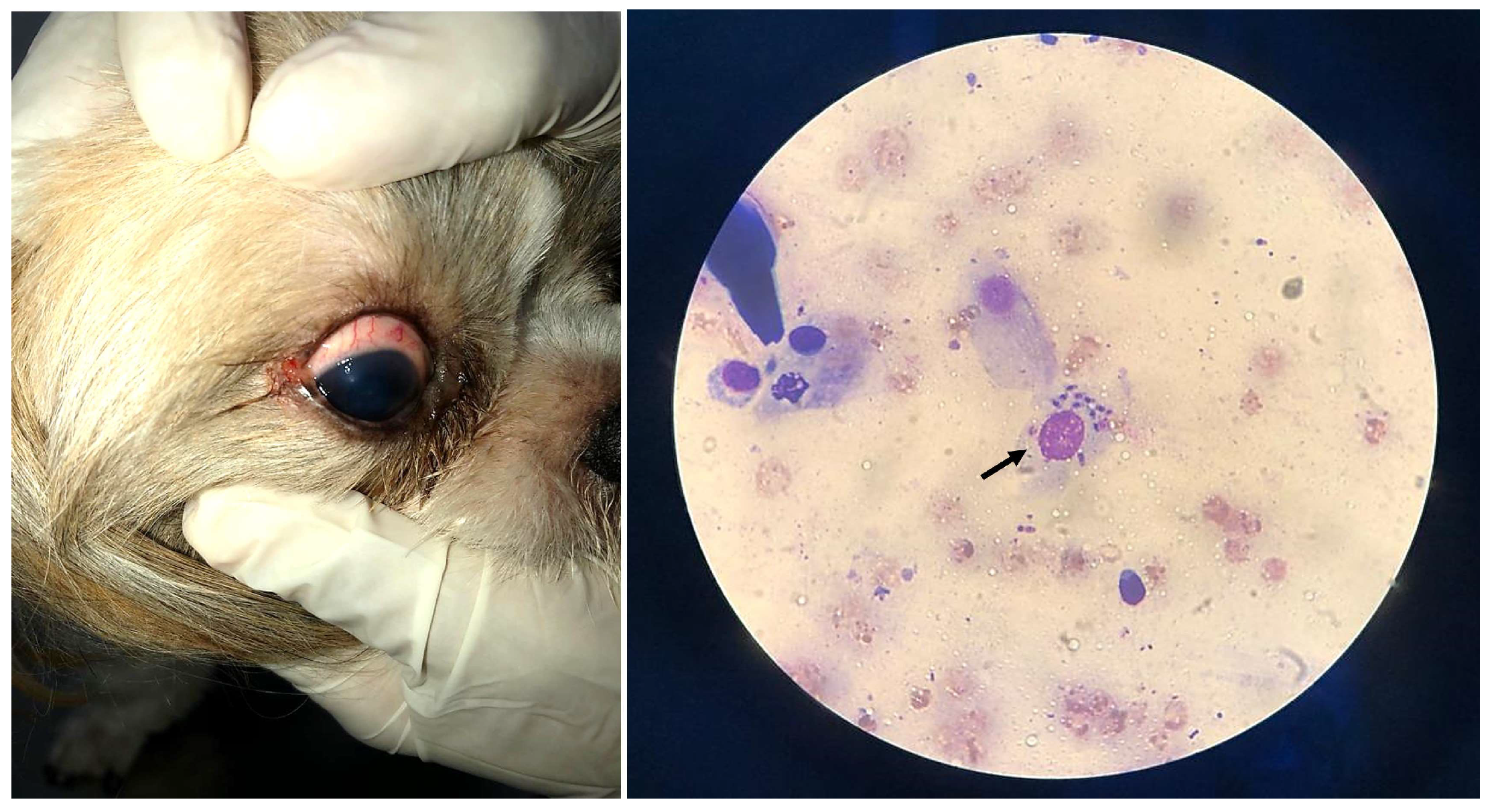
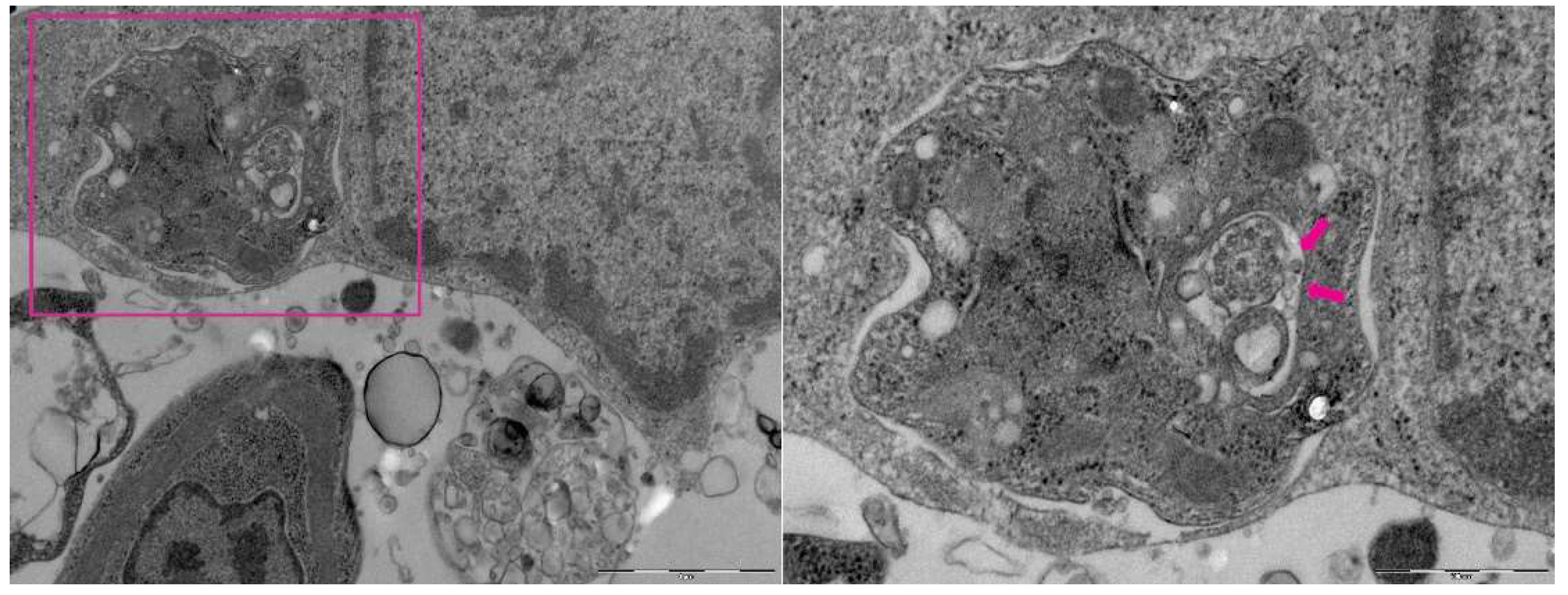
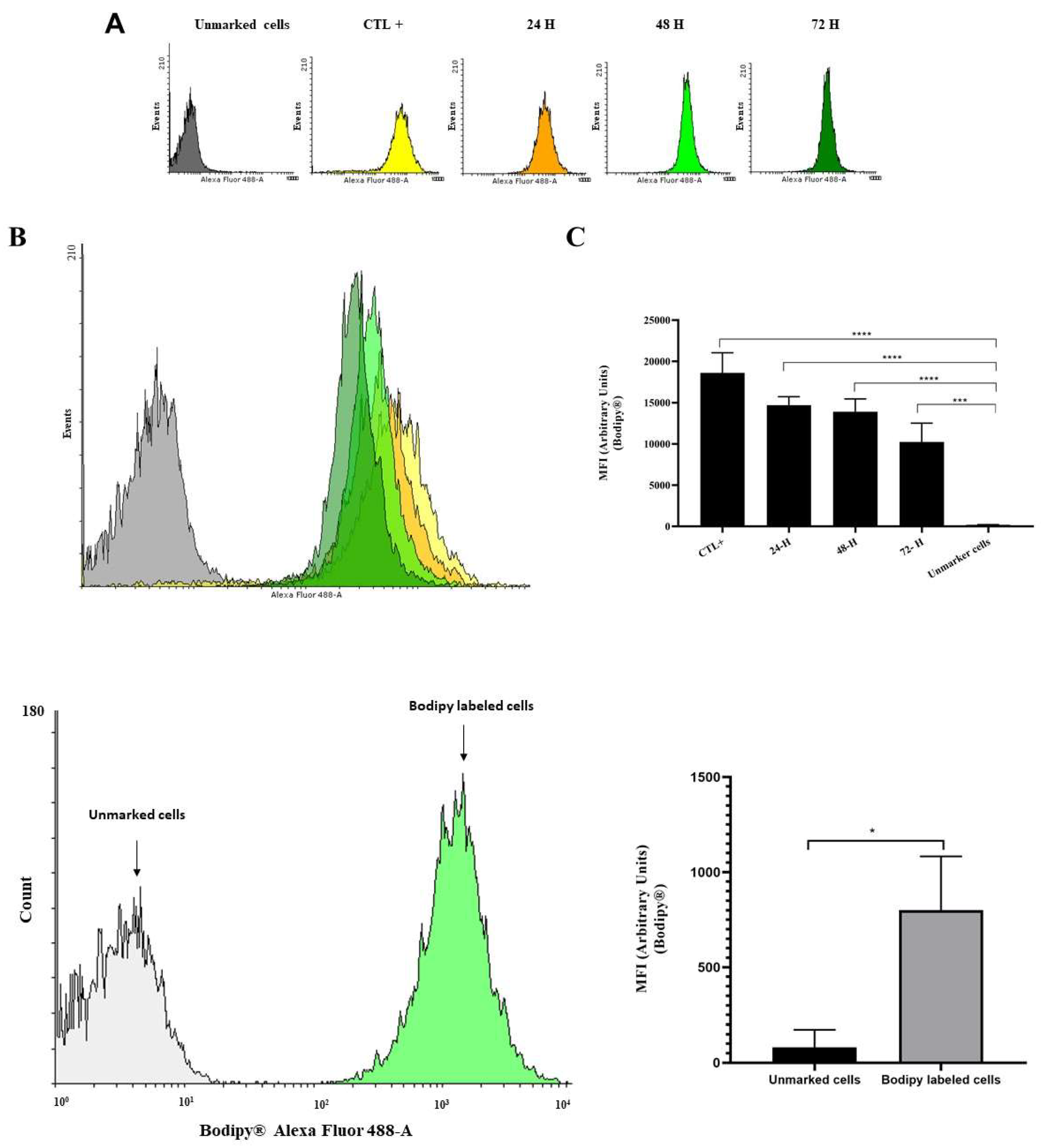
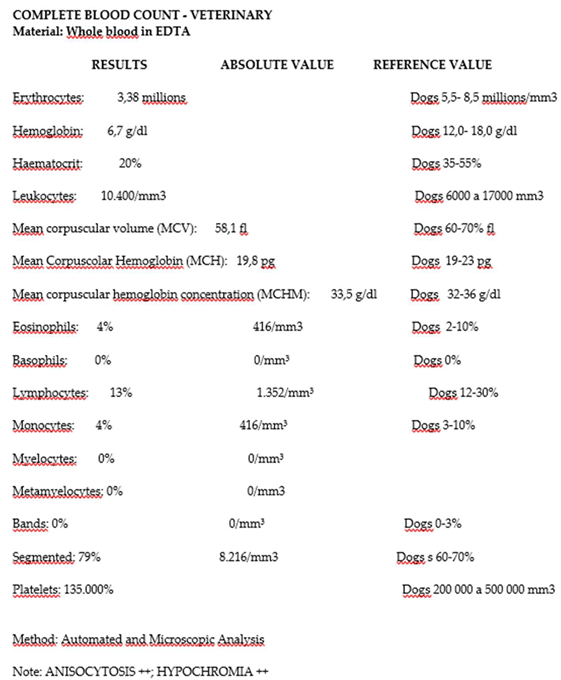 |
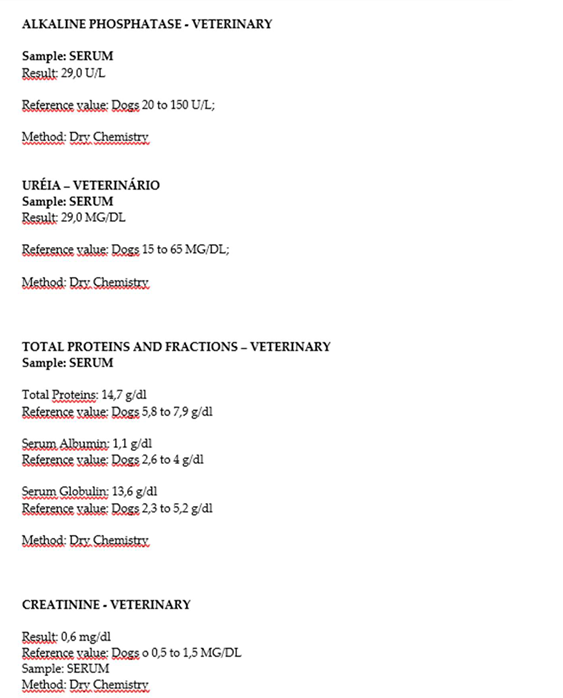 |
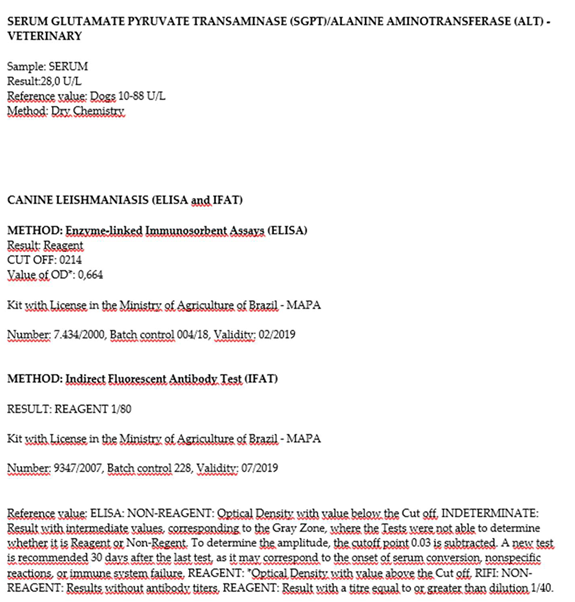 |
Disclaimer/Publisher’s Note: The statements, opinions and data contained in all publications are solely those of the individual author(s) and contributor(s) and not of MDPI and/or the editor(s). MDPI and/or the editor(s) disclaim responsibility for any injury to people or property resulting from any ideas, methods, instructions or products referred to in the content. |
© 2023 by the authors. Licensee MDPI, Basel, Switzerland. This article is an open access article distributed under the terms and conditions of the Creative Commons Attribution (CC BY) license (http://creativecommons.org/licenses/by/4.0/).





